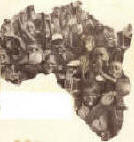It's
Awful! It's Terrible!
It's . . . Never Mind
Stephen
A. Holmes
The
New York Times
July
6, 1997
The reports were shocking, even
enraging, the type that can make one wonder where American society is
headed. In 1995, several research organizations reported that a hefty
percentage -- in one study, 65 percent -- of teen-age mothers had babies
by adult men. The image of lecherous men seducing troubled young girls
barely past menarche prompted several states to step up enforcement of
statutory rape laws, both to protect the girls and to reduce
out-of-wedlock births.
There was one problem, though. The image was largely wrong. What many news
reports on the studies neglected to mention was that 62 percent of the
teen-age mothers were 18 or 19 years old and, therefore, like the fathers
of their babies, adults. Also ignored was the fact that the researchers
did not differentiate between married and single teen-agers. Subsequent
studies have determined that of all those age 15 to 17 who gave birth,
only 8 percent were unmarried girls made pregnant by men at least five
years older.
"It's a sizable minority," said John Hutchins, a spokesman for
the National Campaign to Prevent Teen Pregnancy, "a percentage that
we should definitely be concerned about. But it is still a small
percentage. If all of our attention is placed on that, we're not
understanding the full problem."
The tale of the predatory males is just one example of what has become a
disquieting trend. Call it the "whoops factor," a phenomenon
that starts with shoddy research or the misinterpretation of solid
research, moves on quickly to public outcry, segues swiftly into the
enactment of new laws or regulations and often ends with news
organizations and some public policy mavens sounding like the late Gilda
Radner's character, Emily Litella, as they sheepishly chirp, "Never
mind!"
Arson,
Rape, Poison
The public has been
buffeted by reports suggesting a campaign to torch black churches, a surge
in juvenile crime, rampant child abuse in day-care centers, a rape crisis
on college campuses and the continued poisoning of the country by
cancer-causing chemicals like alar, saccharin or cyclamates or by
electromagnetic forces emanating from high-voltage power wires.
Last week a panel of scientists from the National Cancer Institute and
some leading hospitals reported after an exhaustive study that there is no
evidence that living near power lines causes elevated rates of childhood
leukemia. The link had been suggested by a poorly designed 1979 study by
researchers at the University of Colorado. After that study was reported,
parents of children with cancer sued power companies, and property values
near power lines plummeted.
While there tends to be enough truth in many of these claims to warrant
serious investigation and remedial action, some of the initial reports are
so overblown as to produce panic and then cynicism. "It's what I call
the Weather Channel phenomenon," said Robert Thompson, a professor of
radio and television at Syracuse University. "Five minutes into
watching it, you're convinced that you have to be really concerned about
that front moving in. The next thing you know you've turned off the TV in
a state of panic, feeling that you should be sand-bagging your
house."
When the brewing problem is exposed as a kind of Comet Kohoutek of social
pathology, there is a sense of betrayal, complacency and, finally,
attention is drawn away from the true extent of the problem to the
methodology that was used to unearth it.
"A brilliant sleight-of-hand gets achieved," Mr. Thompson said.
"These are problems that are difficult to solve. And if we divert
attention to a debate on how they are covered or how they are measured,
then we don't have to make the tough choices on how to actually address
them."
Underneath the embarrassing retreats from what in hindsight seems shabby
research, superficial journalism or a triumph of politically motivated
public relations lies a much deeper problem: Americans' willingness,
almost eagerness, to accept a Hobbesian view of man as a brutish thug who
if left unchecked would sow chaos and destruction. In this atmosphere,
even reports like the one claiming that one quarter of all female college
students are raped each year are readily believed.
Moreover, "people are always looking for one single-bullet
answer," said Kristin Moore, president of Child Trends Inc., a
Washington-based research organization specializing in adolescent sexual
issues. "But things are more complicated than people want them to
be."
And they are more complicated than many reporters and editors want them to
be. Cramped by space and time, and usually not having much knowledge of
statistics, journalists are often bamboozled by "experts"
bearing impressive numbers or they fail to put the numbers in historical
or demographic perspective.
"The media do not have the time, inclination or skill to really dig
deeply into reports of research or claims made by political leaders,"
said Alfred Blumstein, a professor of criminology at Carnegie Mellon
University in Pittsburgh. "It merely transmits them, and transmits
them in a way to make headlines or sound bites on TV."
Thus, when the Department of Health and Human Services estimated in 1983
that 1.5 million children are reported missing each year, few people
questioned the information. With the imprimatur of the Federal Government,
a national campaign sprang up that included pictures of missing children
on milk cartons and campaigns instructing children how to avoid being
kidnapped.
Later, more rigorous studies would find that 3,200 to 4,600 children a
year are abducted by strangers. To be sure, that is a large number. But it
is dwarfed by the more than 350,000 children who, the Justice Department
estimated later, are snatched by a parent in custody disputes, and it is
nowhere near 1.5 million.
The definition of a particular group as victims -- often with solid
historical and contemporary evidence -- also helps color the public's
receptivity to studies or claims about them.
For example, last year, a spate of fires at African-American churches
conjured images of white night-riders running amok or a reprise of the
1963 Birmingham church bombing. President Clinton appointed a task force
to look into the problem. Last month, the task force reported that there
was no national conspiracy of hate groups; the fires stemmed in part from
racism but also from financial profit, burglary and personal revenge.
Indeed, about one-third of the 76 people arrested in the church cases
between Jan. 1, 1995, and May 27, 1997, were black.
Often, the unwillingness of reporters to ask hard questions or of policy
makers to provide a context for data can lead regulators and lawmakers
into broad-brush policies that waste resources and political capital.
In May, the House of Representatives, in response to reports of surging
juvenile crime and an increase in the number of young killers, voted to
offer states $1.5 billion in financial incentives to require that
juveniles accused of violent crimes be tried as adults. Even as the House
acted, the Bureau of Criminal Justice Statistics reported that while
juvenile homicides had risen, they were highly concentrated. The bureau
determined that in 1995, one third took place in just 10 of the counties
in the country. It added that 84 percent of the nation's counties had no
juvenile homicides at all.
* * * * *
The general point which Holmes makes in the above article is reinforced in the following brief editorial from The Economist:
Disasters
Something must
(not) be done
The Economist
September 13, 2003
When disasters prompt
new policies, the results may be disastrous
DISASTER demands a response, but it is often the wrong one. That is what the experience of Sir Bernard Crossland, a safety expert who led the inquiry into a disastrous underground railway fire in London in 1987 which killed 31 people, suggests. This week Sir Bernard questioned the £300m ($450m) spent on fire-proof doors, metal escalators and suchlike on London's underground after the disaster. The money, he said, might better have been spent on putting smoke detectors in people's houses. It would have paid for one in every house in the country. House fires kill around 500 people a year, mostly in homes without smoke detectors.
After a disaster, governments' instinct is to halt or restrict the activity concerned. That may be right, but it isn't necessarily. After a rail crash in Britain in 2000, which killed four people, the rail authorities imposed speed restrictions and track inspections. That drove passengers from the railways to the roads. Given that road travel is much more dangerous, this probably caused more fatalities than did the original crash. It also nearly bankrupted the railways.
Arguably, the same could be said of some of the response to September 11th. The initial security measures imposed on airlines were based on hunch rather than serious analysis of costs and benefits. America is now, belatedly, moving away from random screening, which led to absurdly rigorous treatment of obviously harmless categories like small children, veterans and even the planes' own pilots, to a computerised system that checks identities and assesses potential risk.
The same applies to most industrial accidents, environmental catastrophes and health scares. The clean-up after the Exxon Valdez oil spill was hugely expensive and is thought to have damaged the environment more than the original leak. Nature deals with crude oil better than people do. In coping with epidemics like HIV/AIDS, or SARS, simple cheap public health measures (condoms, lifestyle, quarantine) usually work much better than expensive technological fixes like vaccines. The culls of cows and restrictions on movement after Britain's foot-and-mouth epidemic are now generally recognised to have multiplied the cost of the outbreak, rather than containing it.
If possible, the best solution is to let individuals decide themselves how much risk they will bear, and how much safety they want to pay for. Given the choice, many airline passengers might prefer a slightly cheaper flight on an airline that does not carry useless lifevests under every seat, just as they may choose to buy a Lada rather than a Volvo.
Politicians need to avoid bowing to the cries from newspapers that they must be seen to “make things safe”. Encouraging sensible and informed attitudes to risk will make people richer and happier in the long term, but would require courage and honesty up front. Don't hold your breath.
* * * * *
Holmes' point is further reinforced in the following article from the New York Times:
Study Revises Texas's Standing as a Death Penalty Leader
Adam Liptak
New York Times
February 14, 2004
Texas, generally considered the leading death penalty state, actually sentences a smaller percentage of people convicted of murder to death than the national average, according to a new study. It found that the conventional view failed to take into account the large number of murders in Texas.
|
|
As a percentage of murders, Nevada and Oklahoma impose the most death sentences, at 6 and 5.1 percent. In Texas, the percentage is 2 percent. The rate in Virginia, another state noted for its commitment to capital punishment, is 1.3 percent. The national average is 2.5 percent; the median is 2 percent.
"Texas's reputation as a death-prone state should rest on its many murders and on its willingness to execute death-sentenced inmates," wrote the authors of the study, published in a new publication, the Journal of Empirical Legal Studies. "It should not rest on the false belief that Texas has a high rate of sentencing convicted murderers to death."
Using the same analysis, the study concluded that blacks are actually underrepresented on the nation's death row. Blacks commit 51.5 percent of all murders nationally but constitute about 42 percent of death row inmates, the study found.
Texas had about 38,000 murders from 1976 to 1998 in which people older than 16 were arrested, according to the study, which relied on F.B.I. data. Only California had more, about 50,000. The number of murders in Texas, more than anything else, explains the 776 death sentences that were issued during roughly the same period, the study concluded.
The study used arrest records as a proxy for convictions. It did not exclude people who were arrested but not prosecuted or not convicted.
This did not affect the study's conclusions, its authors write, "because erroneous murder arrests are of concern only if they vary unevenly across states."
The study does not consider execution rates. Prisoners on death row in Texas are more likely to be executed than in many other states. As of this week, Texas has executed 319 people since 1976. California, by contrast, sentenced 795 people to death from 1976 through 2002 and has executed only 10.
Comparing execution statistics from the Justice Department with the number of murders the study cited, though, a different picture emerges. The chances that a convicted murderer was executed in the United States in the years in question was a little more than 0.2 percent. In Texas, the corresponding number was, at 0.5 percent, substantially higher. But even by this measure, Texas trails Delaware, at 1.6 percent; Virginia, at 0.8 percent; and Missouri, at 0.6 percent.


